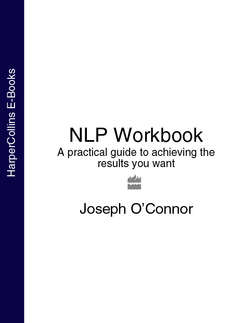Читать книгу NLP Workbook: A practical guide to achieving the results you want - Joseph O’Connor - Страница 42
The Gustatory System
ОглавлениеThis system is made up of remembered and created tastes.
Remember a fine meal. Think back to what it was like to smell and taste the food. You are using your olfactory and gustatory systems.
We do not use our representational systems in isolation, just as we do not experience the world simply through one sense. Thinking is a rich mix of all the systems, just as experience comes through all the senses. However, just as some of our senses are better developed and more ‘sensitive’ to the outside world, so some representational systems will be better developed. We will tend to favour those systems. The preferred representational system usually links with a preferred or unusually acute sense. For example, if you pay a lot of attention to what you see, then you are likely to use the visual representational system for your thinking. With a visual preference you may be interested in drawing, interior design, fashion, the visual arts, television and films. With an auditory preference you may be interested in language, writing, drama, music, training and lecturing. With a kinesthetic preference you may be interested in sport, gymnastics and athletics.
There is no ‘right’ way of thinking. It depends what you want to accomplish. However, creative people tend to use their representational systems in a more flexible way. Creativity often involves thinking of one thing with another system, perhaps to literally, ‘see in a new light’.
| ACCESSING CUES |
The representational system we are using shows itself though our body language in our posture, breathing pattern, voice tone and eye movements. These are known as ‘accessing cues’ – they are associated with using the representational systems and make them easier to access.
The language we use also offers clues to which representational system we are using. As already mentioned, sensory-based words that are associated with representational systems are known as ‘predicates’ in NLP literature.
Here are the main accessing cues, or the main ways we tune our bodies to the different ways of thinking (representational systems). They give clues about how we think (but not the specific thoughts). These are also generalizations and not true in all cases.
Some people think mostly in language and abstract symbols. This way of thinking is often called ‘digital’. A person thinking this way typically has an erect posture, often with the arms folded. Their breathing is shallow and restricted, speech is a monotone and often clipped and they talk typically in terms of facts, statistics and logical arguments.
